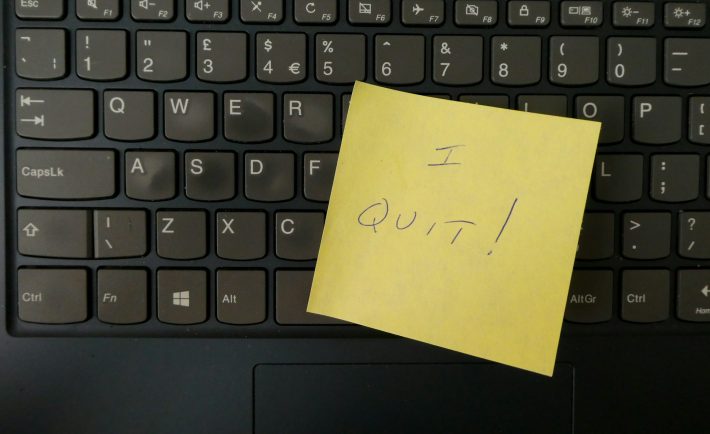
It’s been over a decade since I submitted my first resignation letter, and I’ve written a few more since then. As I transitioned between roles and even shifted careers, one lesson became clear: how you leave a job matters just as much as how you start one.
Maintaining a good relationship with former colleagues and employers can open doors down the line. Whether you’re seeking references, networking, or even returning to a company in the future, your professional relationships can have a lasting impact. So how do you quit gracefully, without creating rifts or awkward goodbyes? Consider this practical guide to leaving on a positive note.
#1: HAVE A FACE-TO-FACE CONVERSATION
If possible, request a meeting with your manager to share the news directly. A personal conversation, whether in the office or via video call if you’re remote, shows respect and professionalism. It gives both of you a chance to talk openly about your departure and ensure a smooth transition.
If you already have a timeline in mind, schedule the meeting at least two to four weeks before your intended last day to give your team ample time to prepare.
#2: BE CLEAR & HONEST
Start the conversation by clearly stating your decision to resign. Don’t beat around the bush. Your manager will appreciate your directness.
You don’t have to share every detail behind your decision, but it’s helpful to offer a general reason. For example, you might be pursuing a new opportunity or changing career paths. Emphasize what you’ve learned in your current role and how it’s helped shape your next steps.
#3: RESPECT THE NOTICE PERIOD
Check your employment contract for your required notice period. Usually, it is two weeks, though some roles may ask for a month.
Clearly state your intended last day in both the conversation and your written resignation letter. Providing adequate notice gives your employer time to plan for your departure and shows your professionalism.
#4: OFFER TO HELP
Once you’ve shared your plans, show that you’re committed to a smooth exit. Offer to help train your replacement, document processes, or wrap up any outstanding projects.

Image Credits: unsplash.com
If you’re unable to complete certain tasks before you leave, outline the next steps and key contacts so your team isn’t left guessing.
#5: EXPRESS GRATITUDE
Before you walk away, take time to thank your manager and team for the opportunity and experience. Reflect on the highlights. These could include a meaningful project, strong mentorship, or skills you developed along the way.
Ending on a grateful note reinforces goodwill and helps ensure your last impression is a positive one.
#6: SEND A FORMAL RESIGNATION
After your conversation, send a formal resignation letter to your manager and HR. This letter should confirm your intention to resign, your last working day, and your commitment to fulfilling your notice period. Keep it concise, polite, and professional.
#7: PREPARE FOR QUESTIONS/EXIT INTERVIEW
Your manager may have follow-up questions about your departure, especially if it’s unexpected. Be honest yet tactful in your responses.
If your company conducts exit interviews, participate in good faith. These are often used to gather feedback and improve the workplace for others. Your constructive input could make a difference.
#8: TRUST YOURSELF
Quitting can be nerve-wracking, especially when you value your team or fear the unknown. But remember, growth often starts with discomfort. This decision likely stems from your desire to challenge yourself, learn more, or reach a new milestone in your career.

Image Credits: unsplash.com
Friendly reminder: take pride in the courage it took to make this move. Lean into your growth mindset and trust that you’re stepping into something better, even if it feels uncertain now. With the right approach, you’ll leave behind not just a job but a strong, respectful connection.




